Well, outside I went again this morning to check on the bees. It was a little chilly at -4°C (25°F) for shorts and a t-shirt, but I was only out there for a few minutes. I just wanted to check to see if we still had bees, as you might be curious as well.
First things first, I checked the front entrance. Lots of dead bees, which sounds like a scary thing, but it’s actually a good sign. The last time it got warm, I checked on them, pulled the insulation off the front, took off the entrance reducer and using a chopstick, swept as many bees as I could from the bottom board of the hive. I couldn’t get all of them I’m afraid, there were still lots in there that I couldn’t reach, but that’s okay.

I also snapped a thermal image at the time as well (sorry, its sideways).
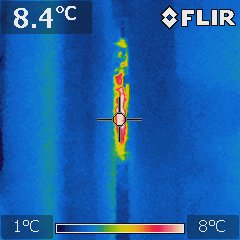
It was neat to be able to “see” the bottom of the cluster. Anyways, when I swept out the bees I could reach, here’s what came out:
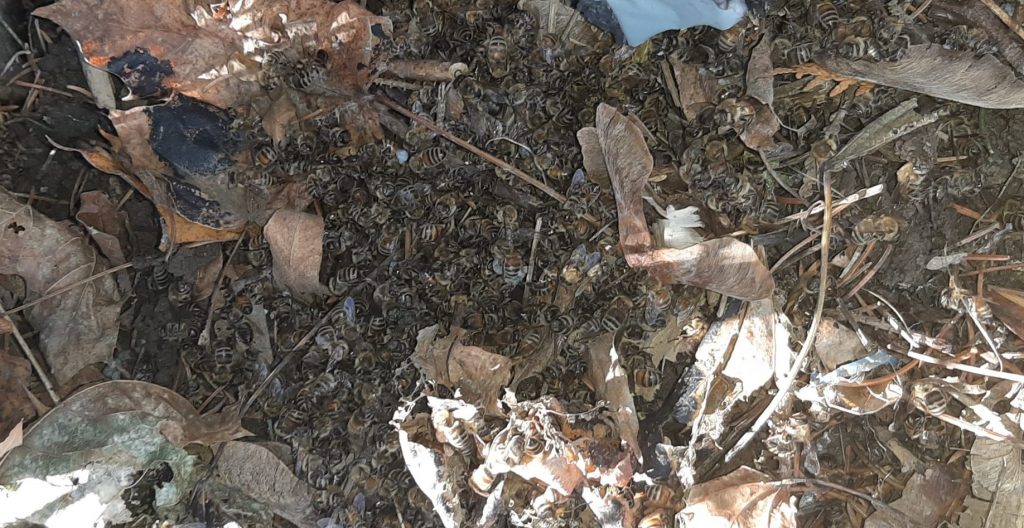
So, today when I saw more dead bees on the front of the hive, it was a good sign. First, it means that if bees are dying, then there are bees in there. Second, if they’re on the front landing board of the hive, then it means the undertakers were still working the last time it warmed up enough for them to leave the cluster.
Dead bees can be a good sign of a healthy wintering hive. So, out came the thermal camera again to see how they were doing.
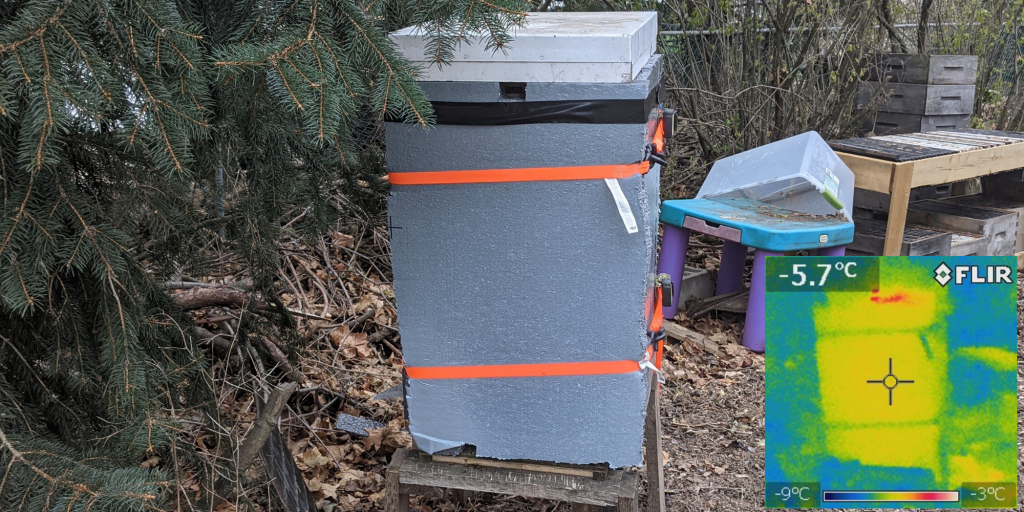
You can’t see a lot, except that the top entrance is definitely putting off some heat – again, a good sign. It means there are bees generating heat inside. So, I got closer to check out the top entrance.
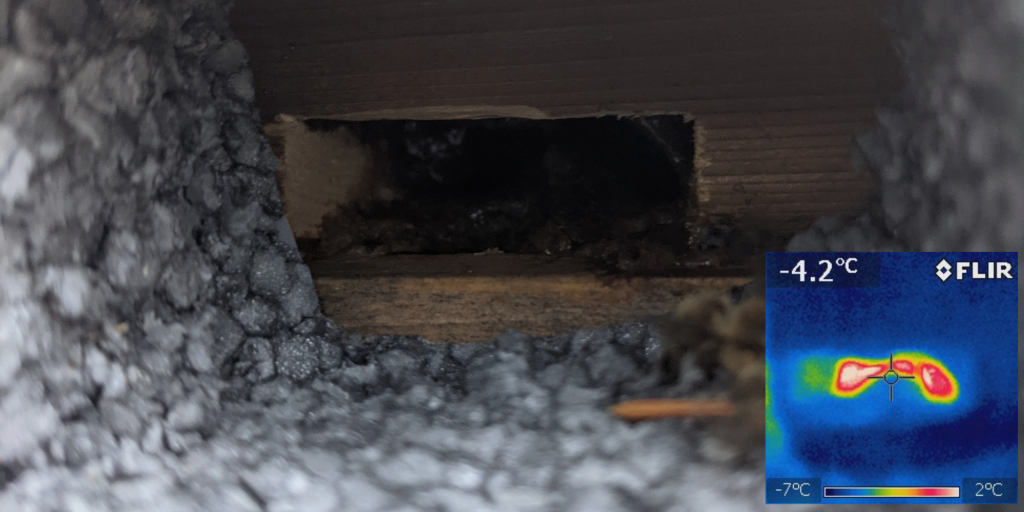
I managed to grab a measurement at some point of 3.7°C – about 10° warmer than the outside air. I thought that was pretty good considering the hive is likely a foot or more below this hole. I can’t tell exactly how warm the cluster is – it’s a bit like trying to measure how hot a pot of water is by measuring the steam hitting the vent over the stove. You lose a lot of energy on the travel up. But, you can hold your hand over the hole and feel the warmth.
Then just for fun, I took off the top cover to see what was going on there. This year I had built a box to handle moisture. It’s basically a box with a hole in the bottom covered by a screen and then filled with pine shavings and then holes on the sides. The idea is that the warm air goes up, hits the cold shavings, condenses and then the moisture seeps into the pine shavings and then is dried by the air.
About the worst thing that can happen to a hive in the winter is that the warm air hits the top of the hive, condenses, gets cold, then rains nearly freezing cold water down on the cluster of bees. That is often what kills a hive in the winter. They can handle the cold – cold and wet is another story.
There are no entrances into the hive itself, so this part isn’t sealed up, so I don’t have to worry about wrecking their work at gluing everything together.

So, the bees seem to be doing alright, as far as I can tell. I’m hoping when it gets colder, I’ll be able to tell where in the hive they are. Right now, it’s not cold enough outside to be able to get a measure through the wood about where the hive is exactly.
But, they’re still in there. 4 more months to go.

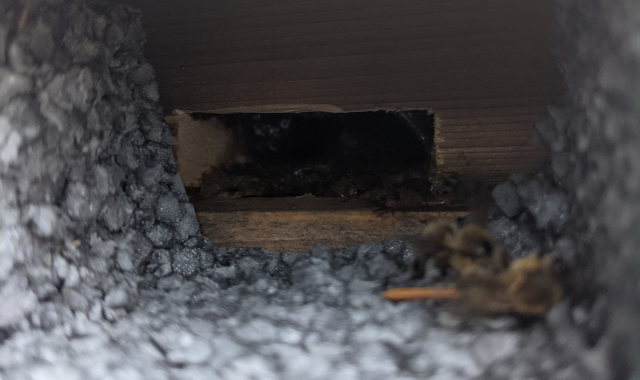
So what do they do in the winter? Just wait for spring? Do they hibernate? Or do they have indoor winter jobs?